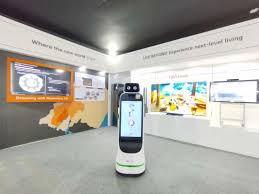teknologi nusantara

Teknologi Nusantara” is a broad term encompassing the development and application of technology within the Indonesian archipelago. It can be interpreted in several ways, depending on the context:
- Indigenous Technology: This refers to traditional technologies developed by various ethnic groups in Indonesia, often using locally available materials and knowledge passed down through generations. Examples include traditional farming techniques, boat building, weaving methods, and various forms of craftsmanship. These often represent sustainable and contextually appropriate solutions.
- Modern Technological Development in Indonesia: This focuses on the current state of technological advancement within the country, including sectors like:
- Information and Communication Technology (ICT): Indonesia is rapidly developing its digital infrastructure and digital economy, with growing internet penetration and a significant mobile phone user base. This includes e-commerce platforms, fintech solutions, and digital government initiatives.
- Renewable Energy: Indonesia is rich in renewable energy resources, and there’s increasing focus on developing technologies related to geothermal, solar, hydro, and wind power.
- Biotechnology and Agriculture: Research and development in this area focuses on improving crop yields, developing disease-resistant varieties, and exploring the potential of Indonesia’s biodiversity.
- Manufacturing and Industry: Indonesia is working to improve its manufacturing sector, focusing on areas like automotive, electronics, and food processing. This involves adopting and adapting advanced technologies.
- Space Technology: Indonesia is making strides in its space program, with ongoing efforts to develop satellites for communication and earth observation.
- Technological Solutions for Nusantara’s Challenges: This approach emphasizes the use of technology to address specific challenges faced by Indonesia, such as:
- Disaster Management: Developing early warning systems, improving infrastructure resilience, and utilizing technology for rescue and relief efforts.
- Healthcare: Improving access to healthcare through telehealth, developing digital health records, and advancing medical research.
- Education: Utilizing educational technology to improve access to quality education, particularly in remote areas.
- Environmental Sustainability: Developing technologies to combat deforestation, manage waste, and mitigate climate change
- baca juga:Kuliner Provinsi Madura
In essence, “Teknologi Nusantara” represents a dynamic field encompassing both the preservation of traditional knowledge and the adoption and adaptation of modern technologies to build a prosperous and sustainable future for Indonesia. It’s a complex and evolving area with diverse actors – from local communities to multinational corporations and government agencies – all contributing to its development
nama penulis:devina marva zora